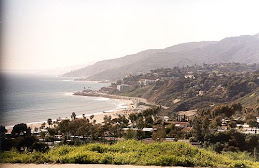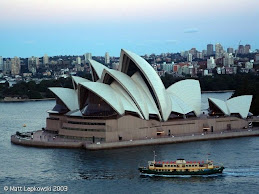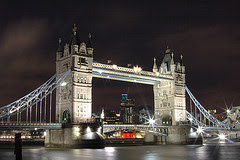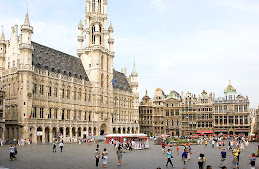Economic consequences of Talibanisation - Daily Times, Pakistan
Wednesday, October 31, 2007
During the 1990s Pakistan’s annual growth rate averaged about 3 percent. The main reason for this was the low level of domestic and international business confidence in the economy coupled with financial mismanagement. Indeed, foreign investment and remittances were dropping and privatisation proceeds, where available, were being squandered.
Meanwhile, the politics of state sponsored jihad and Talibanisation in the region led to conflict-ridden backlashes of sectarianism and bomb explosions. All this changed after 9/11 when a lid was put on jihad, regional peace initiatives were launched and economic management became efficient and merited.
In short, domestic political stability brought economic continuity and renewed confidence and good foreign policies brought debt write offs and aid and investment dividends. The economy picked up together with the rest of the region including the Gulf where the economies boomed despite the Iraq war. Pakistan got out of the IMF oxygen tent and breathed free, able to take measures that were earlier banned under the “conditionalities” of restructuring.The pattern was familiar to Pakistanis.
When politicians rule, the economy goes down; when the generals rule, the economy picks up. Under President General Pervez Musharraf the economy began to hum and he was able to collect record revenues to enable him to spend on development as never before. He managed the State Bank better than past rulers, and accompanied good management with liberalisation of sectors kept closed by politicians in the past. But high growth rates in the third world lead to the dreaded rich-poor gap.
In India this gap is becoming more and more frightening every day, but there is also a low level process of poverty alleviation. In China, the latest Congress of the Communist Party discussed the widening of the rich-poor gap under high growth rates. At the centre of discussion was the progressive impoverishment of 700 million farmers in the countryside now forced to migrate to the cities. In Pakistan, too, the rich-poor gap has materialised and instead poverty alleviation is not fast enough. The famous “trickle-down” effect is just not good enough to satisfy the masses. Now the State Bank warns of food-related inflation and a yawning current account deficit, with debt steadily rising in the background. The world outside has changed too. Food is no longer cheap and UN food reserves are down to their last bags of wheat.
Another major famine anywhere in the world and Pakistan will be compelled to import more inflation into a population that is still poor. As bad luck would have it, oil prices too have shot up in the global market, and if Pakistan lets the burden of this hike fall on the citizens, there will be riots in the streets. It has kept its finger plugged into the dike and not passed on the real price to the consumers at the risk of building a mountain of subsidy that will be destructive when the next government thinks of paring it down in 2008.High growth rates also trigger shortages in the energy sector. The State Bank can hardly compute the effects of the power-crunch in Karachi after the privatisation of its electricity monopoly. The mega-city has seen suffering as never before and the victims have been middle and lower middle class, enabled recently to buy the cheap Chinese split air-conditions only to see outages lasting for long hours daily.
Because the Musharraf government was unable to get anyone in the country to agree to build new water reservoirs, there is shortage of the tradition hydel power in the national grid, leading to load-shedding in the rest of the country too. Since most of the electricity is produced in power stations run with gas, Pakistan fears the coming gas crunch with the Iranian gas pipeline project receding from sight as America gets ready to invade Iran.
The Musharraf government could never get terrorism under control long enough to get foreigners to significantly invest in slightly risky manufacturing sectors, but there was enough reassurance for them to invest long-distance in the stock exchange, apart from direct investment in some limited sectors like communications, telecoms, media and banking. The terrorism factor has never really gone away.
It actually increased in the shape of Talibanisation and General Musharraf’s failure to tackle its blowback from the Tribal Areas. It has now challenged the economy with a choice: will it go on performing or will it panic and retreat? Foreigners are scared, international conferences aimed at attracting customers are being called off, cricket teams are reluctant to play in some cities they consider a target of suicide-bombers.
Travel advisories against Pakistan are becoming the norm.This phenomenon was studied by economists recently when the Lal Masjid Operation went under way and then fizzled out when the people at large and the media sided with the terrorists. The stock exchange nosed up when the Operation began but fell steeply when the assault on the mosque was botched and the media depicted the terrorists as the innocent party. Today in Swat, a relatively well-performing local economy has collapsed following the military operation against the warlord Fazlullah. But because of the uncertainty of the outcome, the people of Swat prefer to live under the tyranny of the warlord rather then lose their businesses. Already in most of the Tribal Areas the economy is in the hands of the Al Qaeda-directed Taliban.
When will Pakistan wake up and squarely face the economic consequences of Talibanisation too? http://www.dailytimes.com.pk/default.asp?page=2007\10\31\story_31-10-2007_pg3_1
Foreign Fighters of Harsher Bent @ http://www.nytimes.com/2007/10/30/world/asia/30afghan.html?_r=1&oref=slogin
skip to main |
skip to sidebar













Don't put the key to your
happiness
in someone else's pocket.
INTERFAITH

Informative Links
Bharat Raagini
Incredible : INDIA
Dil Hai Hindustani
Aana Hai Tou Aa
Jagte Raho
Behti Hai Ganga
Insaaf Ka Mandir
Los Angeles,USA

Sydney, AUSTRALIA

Himalayas, India

Swiss Alps

Eiffel Tower,Paris

Tower Bridge, London

Grand Place, Brussels

SUNRISE

Machu Picchu, PERU

Venice

Modern Art

Pencil sketch

Think about this;
Don't put the key to your
happiness
in someone else's pocket.